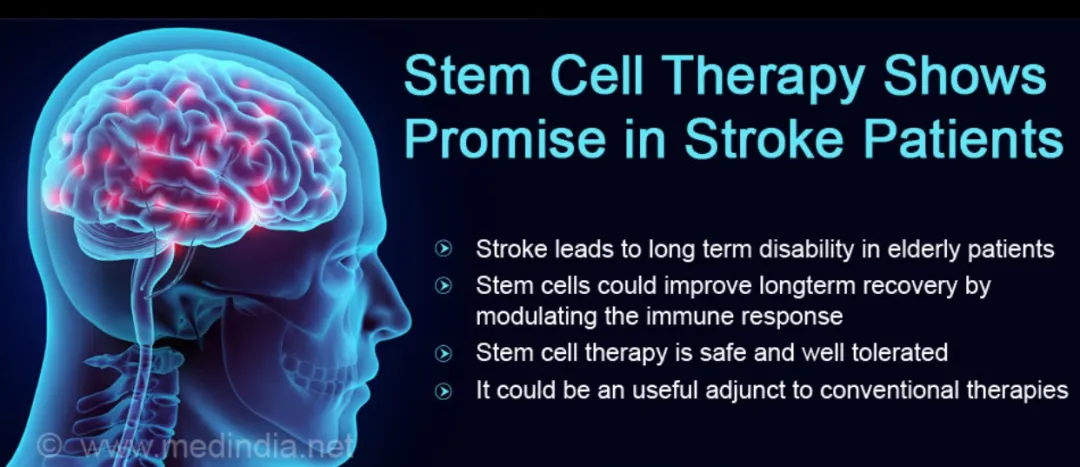
Early results of the first human trial at Stanford University School of Medicine showed that transcranial stereotaxic local injection of human embryonic-derived neural stem cells was safe and began to improve motor function in patients with chronic ischemic stroke one month after treatment. Almost all patients improved in the main efficacy indicators of the changes in the total score of Fugl-Meyer motor assessment. At 12 months, 8 of the 12 patients had a motor improvement of more than 10 points (considered clinically significant), and the other 3 patients reached this threshold earlier.
Dr. Gary K. Steinberg, director of the Stanford Stroke treatment Center at Stanford University School of Medicine, said: "patients' motor function improved at 1 month after stem cell therapy, continued to increase at 3 months, and remained stable at 6 months. We saw an effect we had never seen in any previous trial, that is, motor function recovery continued to increase over a period of 6 to 12 months, with an average improvement of 11.8 points (9.3 points at 6 months). "
The findings were presented at the 2024 meeting of the American Association of Neurosurgeons (AANS) on May 4.
Extended reading.
At present, the treatment for the sequela of stroke is limited. Except that vagus nerve stimulation (VNS) intensive rehabilitation was approved by the US Food and Drug Administration (FDA) in 2021, there is no treatment for functional loss in patients with chronic ischemic stroke. The lead researcher, Dr. Steinberg, and his colleagues developed a neural stem cell product (NR1 cells) derived from human embryos 24 years ago. Preclinical data from different animal models from their own and other laboratories show that this kind of neural stem cell transplantation can promote motor recovery after stroke.
Twenty years later, FDA gave the green light to the current phase 2a clinical study of human 1ram. The clinical trial program included 18 patients, aged between 18 and 75, with a Rankin score of 3-4 6 months to 5 years after the definite diagnosis of ischemic stroke, stable motor dysfunction, and post-stroke rehabilitation. Magnetic resonance imaging (MRI) showed that the focus size of stroke was less than 1 square centimeter or more than 100 square centimeters.
NR1 neural stem cells are injected into the area around the subcortical infarction by stereotactic drilling through the skull when the patient is awake. The clinical trial was open label, dose increasing (four doses were 25000, 50, 000, 100000 and 20 million cells, respectively) stereotactic local injection around the infarct focus, combined with tacrolimus immunosuppressive therapy for 8 weeks. Physiotherapy can be performed during stem cell therapy observation, but it is not necessary. The last patient will receive a transplant in May 2024.
At 12 months, the average score of lower limb movement Fugl-Meyer evaluation (FMA) increased by 4.5 points, and the difference was statistically significant.
The FMA score of the upper limb was also significantly improved, with an average increase of 7.3 points. Stem cell therapy also showed significant improvements in 10-meter walking speed and participation in daily life activities, as measured by the Barthel index. "surprisingly, there was no correlation between clinical efficacy and dose, age, sex, time from stroke to transplant, or mid-air volume," Dr. Steinberg said. Further follow-up will be conducted to confirm these results and to study the recovery mechanism. A prospective, multicenter, double-blind phase 2b study is also planned. "
The adverse events of 17 transplant patients included pain or headache at the injection site of scalp incision in most patients, nausea, fatigue and transient speech disorder in 3 patients, and asymptomatic chronic subdural edema in 2 patients. The above symptoms are mild, they all disappear spontaneously, have nothing to do with cells, and are related to the process of operation. There were no serious adverse events requiring hospitalization.

Commenting on the findings, Jonathan Russin, MD, an associate professor of neurosurgery at the University of Southern California, Pasadena, said it was necessary to be cautious in interpreting the findings. This human stem cell trial, which is the first to treat stroke with neural stem cells derived from NR1 embryos, has done a lot of work, but I don't think we can draw a lot of conclusions until we have completed all the case studies. Wait for the end of the last patient treatment observation (May 2025), and then look at the final analysis results. However, I am still very optimistic and cautiously optimistic about the results of this study.
The study was funded by the National Institutes of Health / National Institute of Neurological Diseases and Stroke and the California Institute of Regenerative Medicine.
Source of information:Stem Cell Therapy Improves Post-Stroke Motor Function - Medscape - May 08, 2024.